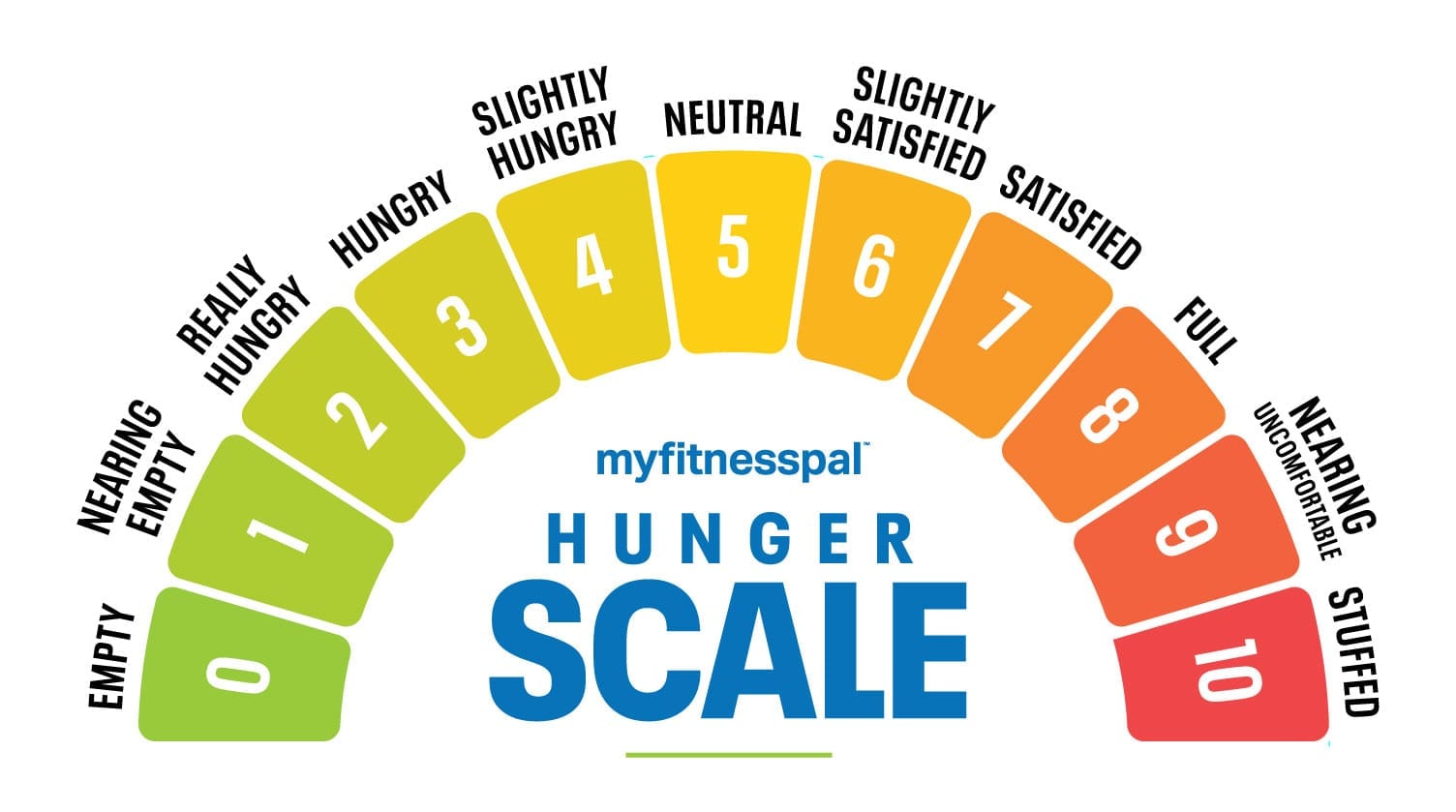The ability to feel hunger and fullness is a quality we were each born with. Babies and little kids don’t need to be told how much milk or food they need to consume to stay healthy; instead, when they are satisfied, they become disinterested in food and simply stop eating. As adults, it’s harder to gauge when our tank is full or nearing empty since food becomes social and also a way to deal with emotions like stress or sleep deprivation.
The good news is there’s a tool called a hunger scale that can help you tune in to your hunger and fullness meter so you don’t overfill your belly or wait too long to eat between meals.
WHAT IS A HUNGER SCALE?
We can train ourselves to tune in to our ability to feel hunger and fullness by visualizing a Hunger Scale. Imagine a meter ranging from 0–10, with zero being empty and 10 being overly full. While everyone has their own definitions, physical experiences and symptoms of what hunger and fullness ranges look like, for a reference point and further explanation, the ranges are described here for you.

HOW DO I USE THE HUNGER SCALE?
If you want to gain better control and lessen the chances of mindless or emotional eating, try using the Hunger Scale. Here’s how it works:
RANK YOUR HUNGER BEFORE YOU START TO EAT
If you rate yourself overly hungry at 0–2, pay extra attention to how fast you are eating. Purposely slow down, so you don’t pass through satisfaction without even recognizing it.
Gentle hunger can be felt at 4, and slight satisfaction is felt at 6. These are ranges in which it is normal to eat, but keep in mind, you may not need very much at all to get you to the point of satisfaction. A small snack may do the trick.
If you’re satisfied and not physically hungry, but food is in front of you and you’re tempted to eat, ask yourself, “What do I need right now?” This is a good way to dodge eating for emotional reasons and take care of yourself because food will still leave you feeling empty if you’re eating as a reaction to emotions.
HALFWAY THROUGH YOUR MEAL, RANK YOUR HUNGER AGAIN
As you move through your meal, continue to check in with your satisfaction level from 1–10 instead of eating on autopilot and cleaning your plate. Keep in mind, it may only take a couple of bites to feel gentle satisfaction.
If you are stuffed and still have food on your plate, don’t throw in the towel and continue eating to oblivion. Instead, push your plate away, ask for a to-go box, freeze leftovers or compost it.
IF YOU CONTINUE EATING, FINISH YOUR MEAL AND RANK YOUR HUNGER AGAIN
If you are at a comfortable satisfaction at the end of your meal, you likely chose the right portion sizes for that meal, which is great.
If you find you’ve overdone it, realize that overeating happens, even to intuitive eaters. Don’t beat yourself up or feel guilty. Instead, question why you continued to eat past the point of fullness. Were you overly hungry when you started? Did the food just taste too good, so you didn’t want to stop? Or maybe you didn’t want to “waste” it?
READ MORE > WHAT 1,500 CALORIES LOOKS LIKE [INFOGRAPHIC]
IS MY HUNGER AND FULLNESS METER BROKEN?
Before you can accurately use the scale to tune in to your body’s hunger and fullness and eat intuitively, you first have to determine if your Hunger Scale is operating properly or if it needs to be recalibrated. If you’ve been severely restricting your calories for a while or find yourself yo-yo dieting and going through periods of binge eating, it’s tough to determine true hunger and fullness because the body is all out of whack. Those innate senses have been turned off and ignored for too long, and they need to be brought back to life before jumping into intuitive eating.
A great way to recalibrate is by eating balanced meals, including a variety of food groups (fiber-rich carbs, fats, proteins) with appropriate portions and following a pattern of eating every four hours, give or take. This helps your body get back in tune with a rhythmic eating pattern and allows normal peaks and valleys in satiety. Until your meter has been recalibrated, it’s tough to really get a clue on hunger and fullness. If you feel nervous about doing this, it might be smart to work with a registered dietitian to help you design a meal plan that meets your “recalibration” needs.
Originally published November 2017, updated with additional information
Unlock an experience that’s like having a dietitian, trainer and coach — right at your fingertips. Go Premium for expert guidance and exclusive tools that will help you reach your personal health goals.




